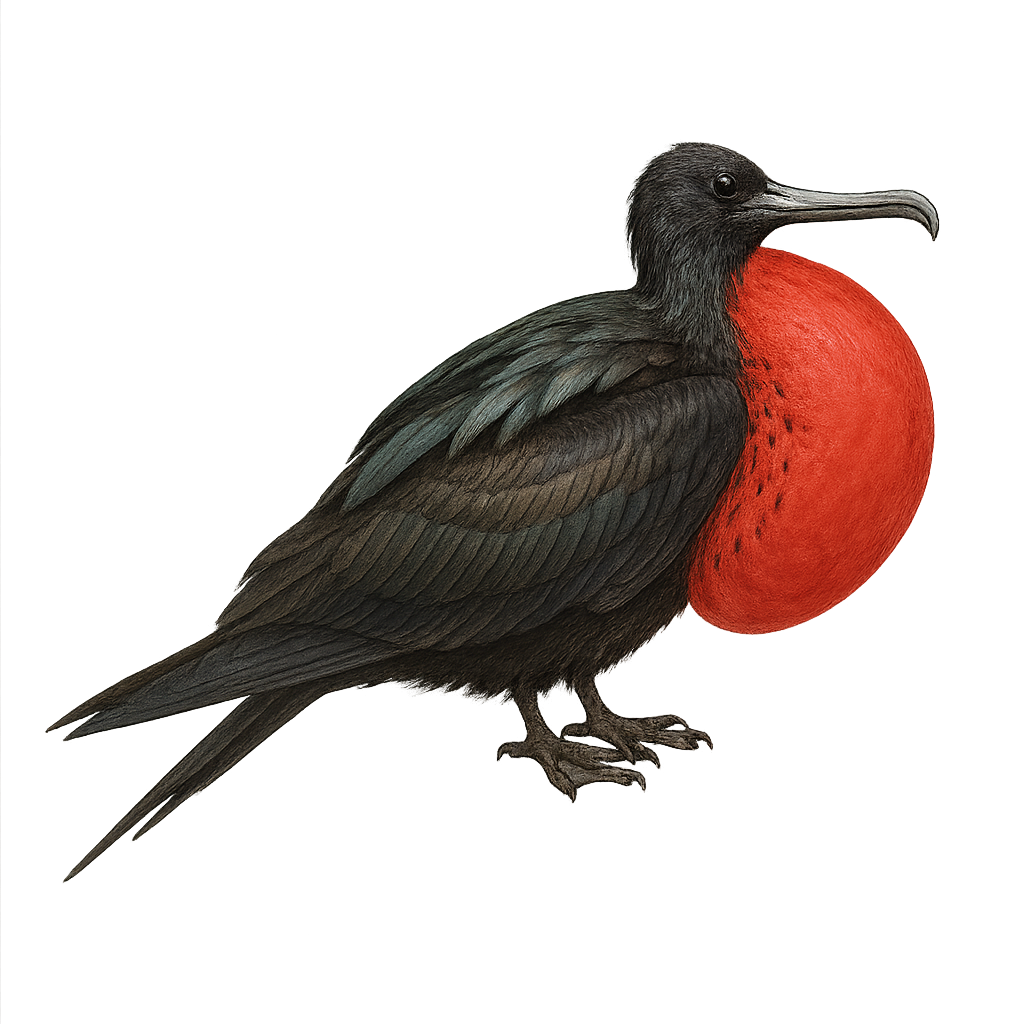Your wildlife photography guide.
Explore the magnificent frigatebird in detail, study its behavior, prepare your shots.
Where to observe and photograph the magnificent frigatebird in the wild
Learn where and when to spot the magnificent frigatebird in the wild, how to identify the species based on distinctive features, and what natural environments it inhabits. The WildlifePhotographer app offers tailored photography tips that reflect the magnificent frigatebird’s behavior, helping you capture better wildlife images. Explore the full species profile for key information including description, habitat, active periods, and approach techniques.
Magnificent Frigatebird
Scientific name: Fregata magnificens

IUCN Status: Least Concern
Family: FREGATIDAE
Group: Birds
Sensitivity to human approach: Suspicious
Minimum approach distance: 10 m
Courtship display: September to December
Incubation: 50-55 jours
Hatchings: October to January
Habitat:
Tropical oceans, coasts, islands
Activity period :
Primarily active during the day, with peak activity in the morning and late afternoon.
Identification and description:
The magnificent frigatebird is an impressive seabird, recognizable by its slender silhouette and long, sickle-shaped wings. Males display a bright red gular pouch, which they inflate to attract females. These birds are primarily black with metallic sheens, and females are distinguished by a white breast. They are often seen soaring above tropical oceans, using air currents to move effortlessly. Frigatebirds do not swim and cannot take off from water, so they feed by catching flying fish or harassing other birds to steal their prey. Their wingspan can reach up to 2.3 meters, making them masters of gliding flight.
Recommended lens:
400 mm – adjust based on distance, desired framing (portrait or habitat), and approach conditions.
Photography tips:
To photograph the magnificent frigatebird, focus on coastal areas or tropical islands where they are often seen in flight. Use a telephoto lens of at least 400mm to capture precise details of their plumage and flight behavior. The best photos are often taken early in the morning or late in the afternoon when the light is soft. Be patient and observe their behavior to anticipate their movements. Avoid disturbing them, especially during the nesting period.
The WildlifePhotographer App is coming soon!
Be the first to explore the best nature spots, track rutting seasons, log your observations, and observe more wildlife.
Already 1 439 wildlife lovers subscribed worldwide

